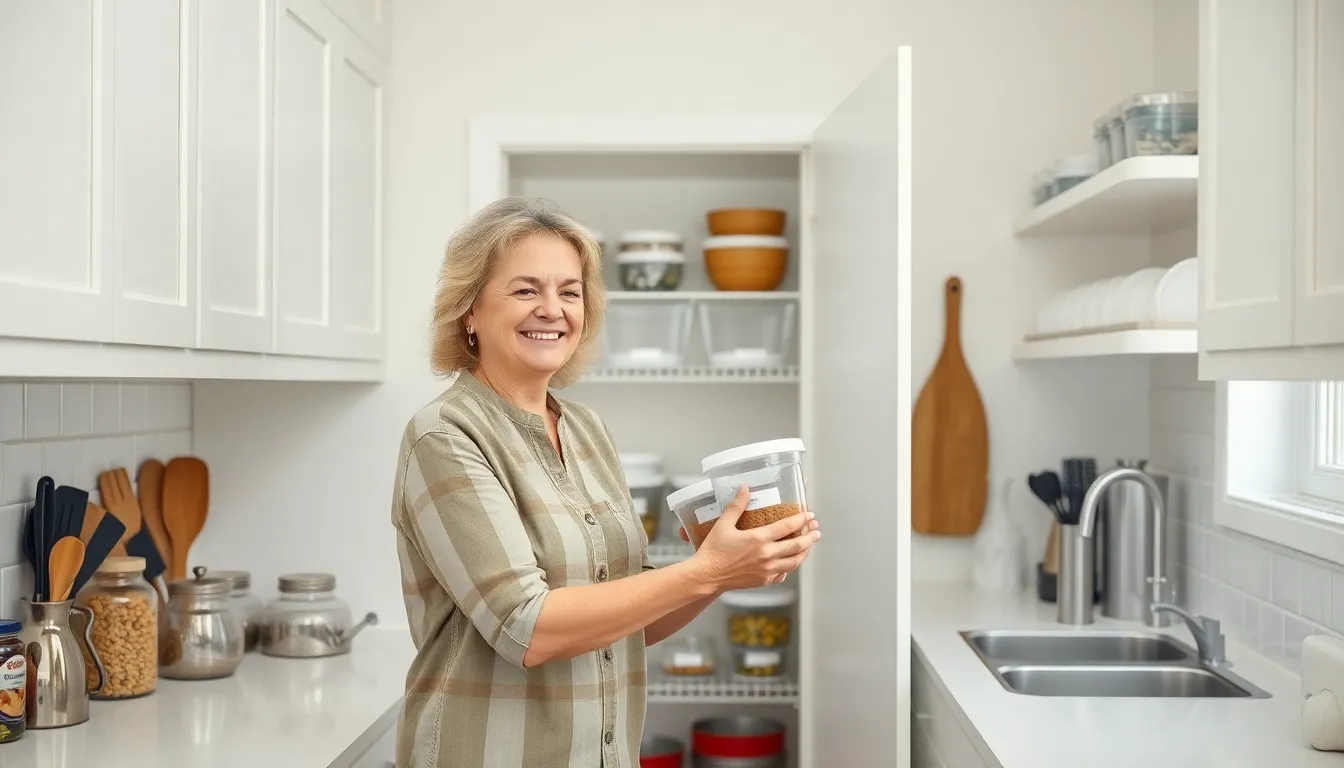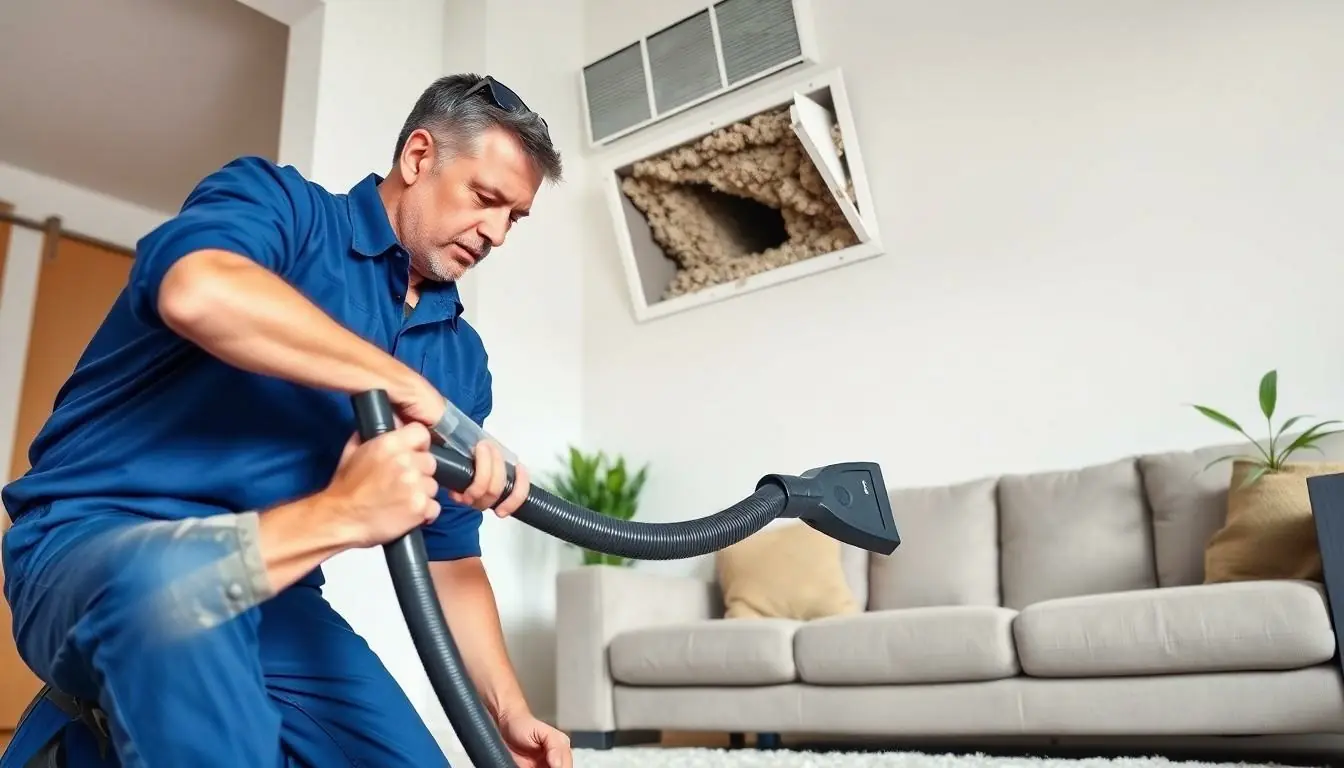In today’s fast-paced world, clutter can easily accumulate, turning homes into chaotic spaces. The overwhelming presence of unnecessary items can impact mental well-being and productivity. Learning effective declutter tips can transform a crowded environment into a serene sanctuary, making it easier to focus on what truly matters.
Decluttering isn’t just about tossing things out; it’s about creating a harmonious living space that reflects personal values and lifestyle. With the right strategies, anyone can tackle the mess and enjoy the benefits of a simplified life. Whether it’s a single room or an entire home, these tips will guide the way to a more organized and peaceful environment.
Table of Contents
ToggleUnderstanding Decluttering
Decluttering encompasses more than just removing items from a space. It involves creating an organized environment that reflects personal values and enhances well-being.
What Is Decluttering?
Decluttering represents the process of removing unnecessary items from a space to improve organization. This practice includes evaluating belongings, deciding what to keep, dispose of, or donate. Decluttering promotes mindfulness about items kept and fosters a simplified lifestyle.
Benefits of Decluttering
- Improved Mental Clarity
- Enhanced focus arises from a tidy environment. Clutter can distract and overwhelm, leading to mental fatigue.
- Reduced Stress
- A simplified space promotes relaxation. An organized environment contributes to a sense of peace and control.
- Increased Productivity
- Greater efficiency occurs in a decluttered workspace. An orderly space streamlines tasks and allows for better time management.
- Enhanced Physical Health
- Clutter can harbor dust and allergens. A clean environment supports overall health and well-being.
- Boosted Creativity
- An organized space can inspire creativity. A decluttered area allows for free thought and innovation by minimizing distractions.
- Personal Empowerment
- Making intentional choices about belongings fosters a sense of control. Decluttering encourages individuals to align their environment with their values and goals.
Declutter Tips for Every Room

Implementing targeted decluttering strategies for each room enhances overall living space. The following tips provide practical guidance for effective organization.
Kitchen Declutter Tips
- Assess counters: Remove all non-essential items from countertops. Keep only frequently used appliances and utensils.
- Organize pantry: Sort food items by category. Place items with closest expiration dates in the front.
- Utilize storage: Incorporate bins and containers for better categorization. Label each container for efficiency.
- Check expiration dates: Regularly inspect spice and food items. Discard expired products to ensure safety and freshness.
- Minimize duplicates: Limit kitchen tools and gadgets. Only retain items that serve distinct purposes.
Living Room Declutter Tips
- Clear surfaces: Remove unnecessary items from coffee tables and side tables. Maintain surfaces to create a cleaner look.
- Sort media: Evaluate books, DVDs, and games. Donate or recycle those not used in the last year.
- Organize furniture: Arrange furniture to maximize space and flow. Use multi-functional pieces to reduce clutter.
- Limit decor: Choose a few statement pieces instead of overcrowding with decor. Aim for a balanced aesthetic.
- Designate zones: Establish specific areas for activities such as reading or socializing. Maintain organization in each zone.
Bedroom Declutter Tips
- Streamline closet: Review clothing items. Donate those not worn in the past year or that don’t fit.
- Declutter nightstands: Keep nightstands free of unnecessary clutter. Retain only bedside essentials like a lamp and book.
- Organize under-bed storage: Utilize under-bed space for seasonal items. Keep storage bins labeled for easy retrieval.
- Minimize personal items: Limit decorative pillows and throws. Opt for a cohesive color scheme for a tranquil environment.
- Establish a routine: Dedicate time weekly to maintain clutter-free surfaces. Incorporate consistent cleaning habits to sustain organization.
Effective Decluttering Strategies
Understanding effective decluttering strategies maximizes space and minimizes stress. Two notable methods serve as powerful tools for achieving a clutter-free environment.
The Four-Box Method
The Four-Box Method provides a structured approach to decluttering. This strategy involves four boxes labeled: Keep, Donate, Trash, and Relocate.
- Keep: Store items that are necessary or bring joy.
- Donate: Choose items in good condition that others can use.
- Trash: Discard items that are broken or unusable.
- Relocate: Move items that belong in another area to their appropriate spaces.
By categorizing belongings, individuals can streamline decision-making and visualize progress. This method encourages accountability and clarity, making it easier to let go of unnecessary items.
The Marie Kondo Approach
The Marie Kondo Approach focuses on joy as a guiding principle in decluttering. The central idea is to evaluate each item based on whether it “sparks joy.”
- Assess Each Item: Hold each item and ask if it brings joy.
- Category-Based Decluttering: Tackle specific categories such as clothing, books, and kitchen items sequentially.
- Storage Solutions: Utilize storage methods that promote visibility and accessibility, such as stacking and folding techniques.
This method emphasizes emotional connections to belongings, encouraging a deeper reflection on what truly enhances personal living spaces. By fostering connection and intention, individuals can create environments that resonate with their values and aspirations.
Maintaining a Decluttered Space
Maintaining a decluttered space requires intentional habits and consistent routines. It encourages ongoing organization and keeps clutter at bay.
Establishing Routines
Establishing routines helps individuals stay organized and maintain a clutter-free environment. Incorporating daily, weekly, and monthly practices can ensure spaces remain tidy.
- Daily Check-In: Spend five to ten minutes each day assessing clutter levels and addressing items out of place.
- Weekly Cleanup: Dedicate a specific day each week for a more thorough organization session, focusing on high-traffic areas.
- Monthly Reviews: Conduct a monthly evaluation of belongings, identifying items that no longer serve a purpose and deciding whether to donate or discard them.
- Consistent Storage Practices: Designate specific locations for items, ensuring that every belonging has a home, making it easier to return them after use.
Seasonal Decluttering
Seasonal decluttering helps keep spaces organized by evaluating possessions as seasons change. This practice encourages individuals to reassess what they own and make necessary adjustments.
- Spring Cleaning: Assess clothing, furniture, and decorative items, donating or discarding those that are no longer needed.
- Summer Assessment: Review outdoor equipment and summer gear, ensuring that items are in usable condition and ready for the season.
- Fall Preparation: Sort through fall and winter clothing, removing those that don’t fit or haven’t been worn in the last year.
- Annual Organization: Set aside time each season to reorganize spaces, optimizing storage solutions and eliminating items that no longer align with lifestyle needs.
Implementing these routines and seasonal strategies enhances both well-being and productivity, ensuring a peaceful and organized living space.
Embracing decluttering can lead to a more balanced and fulfilling life. By transforming chaotic spaces into organized sanctuaries individuals can experience enhanced mental clarity and reduced stress. The thoughtful evaluation of belongings fosters a deeper connection to personal values while promoting a lifestyle that aligns with individual goals.
Incorporating effective strategies and consistent routines makes it easier to maintain a clutter-free environment. Whether using the Four-Box Method or the Marie Kondo Approach each method empowers individuals to make mindful decisions. A commitment to decluttering not only improves physical spaces but also nurtures emotional well-being. With these tips in hand anyone can embark on a journey toward a more serene and productive life.







